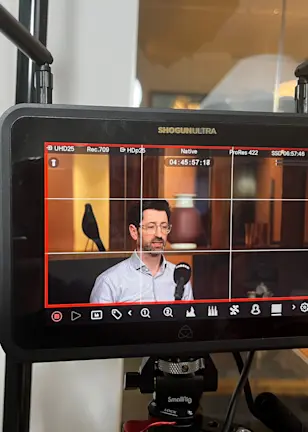Effectively tackling the climate crisis requires focused measures to decarbonize the global economy by 2050. Keeping track of progress is critical to this action, to gain insight into whether these measures are successful, and to highlight if regulators need to step up their interventions.
For investors, too, it’s important to track this progress. Monitoring whether credit issuers are meeting decarbonization targets and their own strategic carbon-related goals is valuable in being able to identify who will succeed in the march towards the goals of the Paris Agreement – and who is at risk. But doing so requires emissions-reduction pathways as well as reliable information about how companies are faring relative to these pathways.
And then there is the complication that, for some sectors, decarbonization performance is largely tied to reductions in Scope 3 emissions, in other words, emissions from current and future consumer use rather than from the manufacturing process. This is of course difficult to measure, and depends on our skills in accessing quality forward-looking data.
Another complexity is that each sector differs in the technology needed to meet emissions-reduction goals, and in terms of the cost implications, risks and opportunities of the transition. The consensus approach, driven by organizations such as the Science Based Targets initiative (SBTi) and the Transition Pathway Initiative (TPI), is therefore to develop sector-specific decarbonization pathways.
Robeco began work on its proprietary series of sector-based decarbonization pathway models in 2020, with the objective that these would inform the investment teams as they evaluate the risks, challenges and opportunities that companies and sectors face as they align their operations and products with the goal of net-zero emissions.
Advancing sustainable investing
The Robeco Sector Decarbonization Pathway (SDP) methodology is designed to measure the position of each company relative to its sector in terms of carbon emission reduction targets, to identify what investments it needs to make in low-to-zero-emissions technologies, as well as possible regulatory penalties and other sector-specific criteria.
This tool is the latest in Robeco’s pioneering innovations that help advance sustainable investing and achieve real-world influence through objective data, rigorous analysis and consistent frameworks.
The outputs from the methodology are used by the investment teams, the Sustainable Investing (SI) Research team and the Active Ownership team to identify sector leaders and laggards in light of their overall preparedness for managing the inevitable future costs and risks of a transition to net-zero emissions.
“The road to a net-zero economy will be long, bumpy and disruptive,” says Lucian Peppelenbos, Climate and Biodiversity Strategist at Robeco. “To navigate the risks of the transition and to capture its opportunities, investors need forward-looking metrics. Robeco’s Sector Decarbonization Pathways move investors one step closer to the holy grail of climate analytics.”
How it works
For each company, the Robeco SDP methodology has three components.
In the first component, analysts from the SI Research team construct a company’s projected emissions pathway to 2050, using backward and forward-looking data consisting of information disclosed by the company and projected estimates.
The company’s projected emissions pathway is then compared with scientifically modeled, sector-specific benchmark trajectories, to evaluate its relative performance. This is expressed in the form of a decarbonization score, which ranges from 0 to 100, with 100 being the best score. The closer the company’s alignment with the relevant sector pathway, the better the score.
Timing also matters here: emission reductions in the short and mid-term count more than those in the long term, which means that the scores of companies planning to cut emission intensities sooner rather than later will be higher.
The second component of the SDP model is an assessment of a company’s credibility and capacity for hitting its own targets as well as the benchmark emission targets. To do this, SI analysts calculate the required level of investment – capital and operational expenditures – needed to achieve the company’s disclosed decarbonization pathway; they also compare this to the company’s current and projected capex investments into carbon abatement technologies (e.g., battery electric vehicle production for the automotive sector, clean and renewable energy generation for oil and gas). Severe shortfalls in capex spending cast doubt on a company’s intention or even ability to cut future emissions and reach its own or regulatory emission targets.
Thirdly, the model assesses the financial impact of potential regulatory fines, stranded assets and demand reduction – all of which are critical threats for carbon-intensive industries.
Get the latest insights
Subscribe to our newsletter for investment updates and expert analysis.
Crucial input for assessing creditworthiness
Rachel Whittaker, Robeco’s Head of SI Research, believes the insights generated by the model are crucial in assessing the creditworthiness of an issuer. Companies are exposed to rising taxes and costs related to their emissions footprint, while also needing to incur capital and operational expenditure to transform their activities in line with net-zero ambitions, all of which erode cash flow.
And there is no getting away from the financial repercussions: companies unwilling or unable to make the necessary changes to decarbonize their operations and products will be penalized – for example because they are left with stranded assets or because regulators impose harsh penalties.
“Companies have no place to hide,” she says. “They simply have to make the transition. And that’s why it’s so relevant for our investment views to know where an issuer is positioned relative to its SDP curve. The further away it is from where it’s supposed to be, the more likely it becomes that the regulator will act harshly, essentially forcing the company to make investments or costly changes to the production process.”
Rolling out the SDP methodology across sectors
Initiating and expanding the coverage of the Robeco SDP model across all sectors has been a painstaking process of consulting academic and industry research, establishing what data and benchmarks are available, building forecasting models and gleaning the necessary company information.
“We began with the most highly carbon-intensive sectors, including oil and gas, automotive, meat production, steel, cement and aluminum manufacturing, real estate and power generation,” says Farahnaz Pashaei Kamali, SI Analyst in the Robeco SI Research team.
“Our starting point for the sector benchmarks were the TPI [Transition Pathway Initiative] decarbonization scenarios, to which we applied insights from academic research to define technologies, costs and the carbon budget for each sector, and to assess in which sectors we ought to include Scope 1, 2 and 3 emissions.”
“Our intention with assessing a company’s performance relative to its sector benchmark was to move beyond using only backward-looking data, such as a company’s reported carbon footprint, and to capture forward-looking metrics by asking: what are companies’ targets and commitments as they move to decarbonize their activities?”
In the second component of the methodology, that of assessing the credibility of these targets, the SI analysts assess the cost of these plans. “This puts companies’ commitments into perspective,” she says. “A company could report its decarbonization commitments to the SBTi, which would verify whether this is in line with the sector pathway. But as an investor we would still need to establish whether the company has the capacity and means to honor those commitments.”
Current and future regulatory action represents a further cost element to be estimated. “We look at the policies and regulation applicable to each sector, consider the exposure to various taxes and emissions trading systems, and estimate what these mean for companies’ future earnings. Carbon taxes, for instance, already play a big role in the cost burden, but as regulation governing emissions become stricter, these costs could escalate further,” Pashaei Kamali says.
Here she uses the example of the oil and gas industry: “Fines will be negligible compared to revenue loss from drastically reduced demand, as governments direct their attention to heavy emitters in order to make good on net-zero pledges. A critical feature of the SDP for the oil and gas sector is that it captures the economic impact of reduced demand and write-downs on capital assets (e.g., plants, property and equipment) on future enterprise value.”
A powerful tool for the engagement process
The SDP methodology is an important tool in credit analysts’ and portfolio managers’ toolkits, as they assess the risks and opportunities to which issuers are exposed. And, as the methodology becomes automated, the SDP models enable analysts to construct and assess the short, mid and long-term decarbonization performance of companies across product universes and asset classes.
The granular analysis also provides Robeco’s engagement specialists with objective, specific and quantified data on a company’s decarbonization performance relative to peers – a powerful means for prioritizing, driving and accelerating engagement activities among slow movers.
Pashaei Kamali recounts that she was part of the team that engaged with a European multinational oil and gas company on their climate transition policies. “It was clear that they were surprised by the depth and detail of our evaluation, including our assessment of the credibility of the capex commitments. We gave them deeper insight into the workings of our model and they could clarify aspects of their investment plans.”
Indeed, the application of the decarbonization methodology is one example of the strong outcomes created through cooperation across Robeco’s areas of expertise – from credit analysts and portfolio managers in the investment teams, to the engagement specialists as well as the SI Research team.
“These teams have complementary competencies and we are continuously sharing information,” says Cristina Cedillo Torres, Engagement Specialist at Robeco. “I think you get the most out of an engagement process when cooperating in this way. In a recent engagement with [a European multinational electricity and gas manufacturer and distributor], we had the SI researcher digging into the cost curves of certain technologies and the implications for capex, which in itself is an important insight that the investment teams take into account. And my role was to judge the company’s forward-looking strategy for addressing an ESG topic.”
Robeco has developed proprietary sector decarbonization pathways for the majority of high-emitting industries, and the progress continues. Once all sectors are covered, SDP assessments can be done for the majority of companies that Robeco covers. Ultimately, this means it will be possible to assign SDP scores to portfolios.
Whittaker says that, “from our perspective in fundamental credit analysis, this is a very important component of our work. We are only at the beginning of this research process and there is much more to come.”
This is an extract from a longer publication, ‘Four ways credit investors can contribute to a more sustainable future’
Important information
This information is for informational purposes only and should not be construed as an offer to sell or an invitation to buy any securities or products, nor as investment advice or recommendation. The contents of this document have not been reviewed by the Monetary Authority of Singapore (“MAS”). Robeco Singapore Private Limited holds a capital markets services license for fund management issued by the MAS and is subject to certain clientele restrictions under such license. An investment will involve a high degree of risk, and you should consider carefully whether an investment is suitable for you.


















